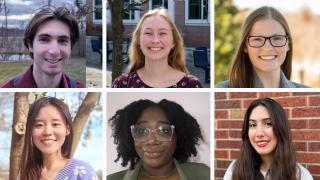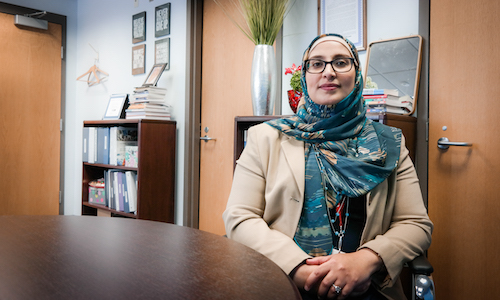
Hamtramck, a Detroit “suburb” that’s actually totally surrounded by the city of Detroit, has long embraced its immigrant heritage. Until relatively recently, that would largely have been framed in terms of its status as a Polish-American enclave. But today, Hamtramck has become much more multicultural, with new residents from around the world — particularly Bangladesh, Yemen and other Middle Eastern countries — now calling the tiny 2.5-square-mile city home.
This demographic evolution have given the city an exciting, international feel, but it’s also presented a few challenges — particularly for the schools. In this small district of 3,500, you’ll find students from dozens of different countries speaking at least 29 languages. A good 70 percent of students enrolled in the public school system are considered “English learners” (students who are still learning to communicate in English). And the district has struggled to keep up with the needs of its changing student body.
When UM-Dearborn alumna Jaleelah Ahmed (‘05 M.A.) took a post in Hamtramck as its first ever director of English language development in 2016, the issue had already reached a crisis point. The district’s resources for teaching English learners were so overwhelmed that the U.S. Department of Education’s Office of Civil Rights cited Hamtramck for not providing students sufficient access to the core curriculum. Ahmed, who had spent years in the region’s schools improving literacy outcomes for English learners, was brought in with a broad mandate to do something about it.
Guided by methods she’d learned in her master's and doctoral programs at UM-Dearborn, and bolstered by more than two decades of experience as a teacher and principal, Ahmed began with a comprehensive assessment of the district’s challenges. What she found was indeed startling. “When I started, we had maybe eight or 10 teachers in the entire district who were ESL [English as a Second Language] endorsed,” Ahmed remembers. “We had students who were entering kindergarten as English learners, and by the time they got to high school, were still in the ESL program. I’d talk with teachers, who were motivated to help their students, but many had to rely on ‘boxed’ solutions, where at most they could work with four students at a time. This was in a building with 90 percent English learners. Sometimes the rest were literally hanging out in the parking lot. We just weren't set up to serve our student population.”
Ahmed’s early actions were swift and broad. To ensure their solutions were rooted in qualitative evidence, she established a Youth Voice and Engagement Committee to hear real experiences from students. She developed a parent engagement program that sent liaisons and facilitators out into the community, providing classes to new immigrants and making home visits to support parents. She launched an effort to hire more ESL teachers. And when that proved difficult, she worked out a partnership with Wayne State University to lead an ESL endorsement program on their school’s campus for a cohort of current teachers — with the district covering the entire tuition cost.
Ahmed is frank about the fact that not all of her actions have been popular — like early on, when she moved teachers to strategically use the ESL-endorsed instructors in the buildings where they were most needed. “As an administrator, asking a longtime teacher to move to a new building or take on a new assignment is one of the toughest things you can do,” she says. “But at the end of the day, I had to persuade people this was about protecting the rights of the students. They were entitled, by law, to an education, and we have to do what we need to do to give them that. The teacher shortage has already put us in a bind; we have to be creative to ensure that students still receive highly qualified teachers.”
Three years later, the effort is paying off. The number of ESL endorsed teachers in the district has quadrupled. Student attendance now stands at 90 percent — up from a low Ahmed prefers not to recount. Their resources for serving English learners have now been sufficiently bolstered that the citation from the Office of Civil Rights has been lifted. And the low-key Ahmed breaks into an outright smile when she shows off a certificate documenting national recognition for her largest elementary school’s dramatically improved outcomes for its English learners.
For her work, Ahmed was named the district superintendent in May of last year — her first appointment at that level. While she’s upbeat about their progress, she’s also realistic about the challenges still ahead. Some of those are unique to Hamtramck. But others, she says, are born of a decades-long disinvestment in public education that’s made being an educator one of the most demanding jobs around.
“Yes, I think being a teacher takes grit now,” Ahmed says. “I’m honest about that with all my teachers, and that’s why we have to empower them to bring all their talents, their creativity to the job. We haven’t been given a manual for the issues we face today, but we can’t waste energy simply wishing it was different. This is what it is. Parents are giving us their most prized possessions, and we as educators simply have to do whatever it takes.”






